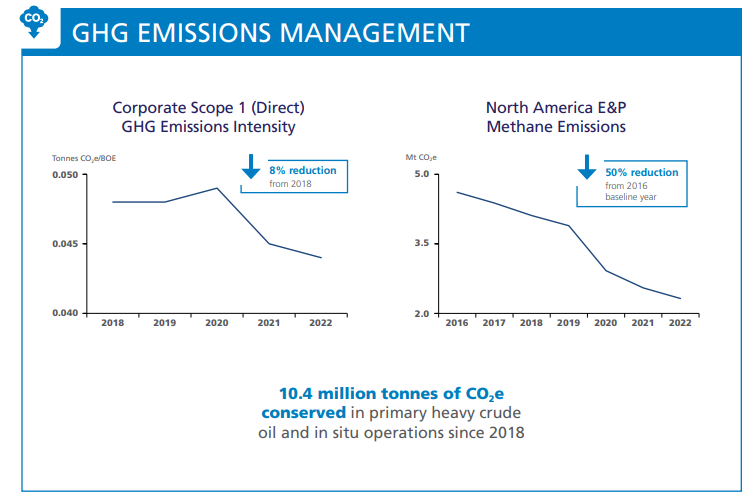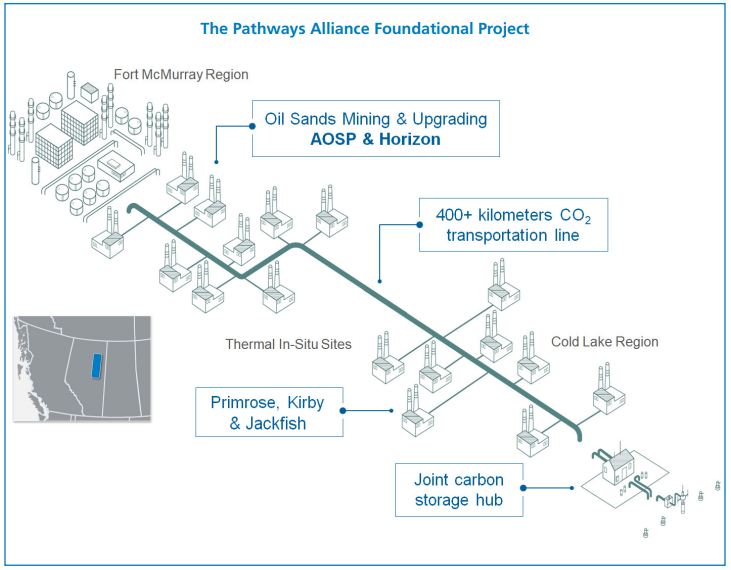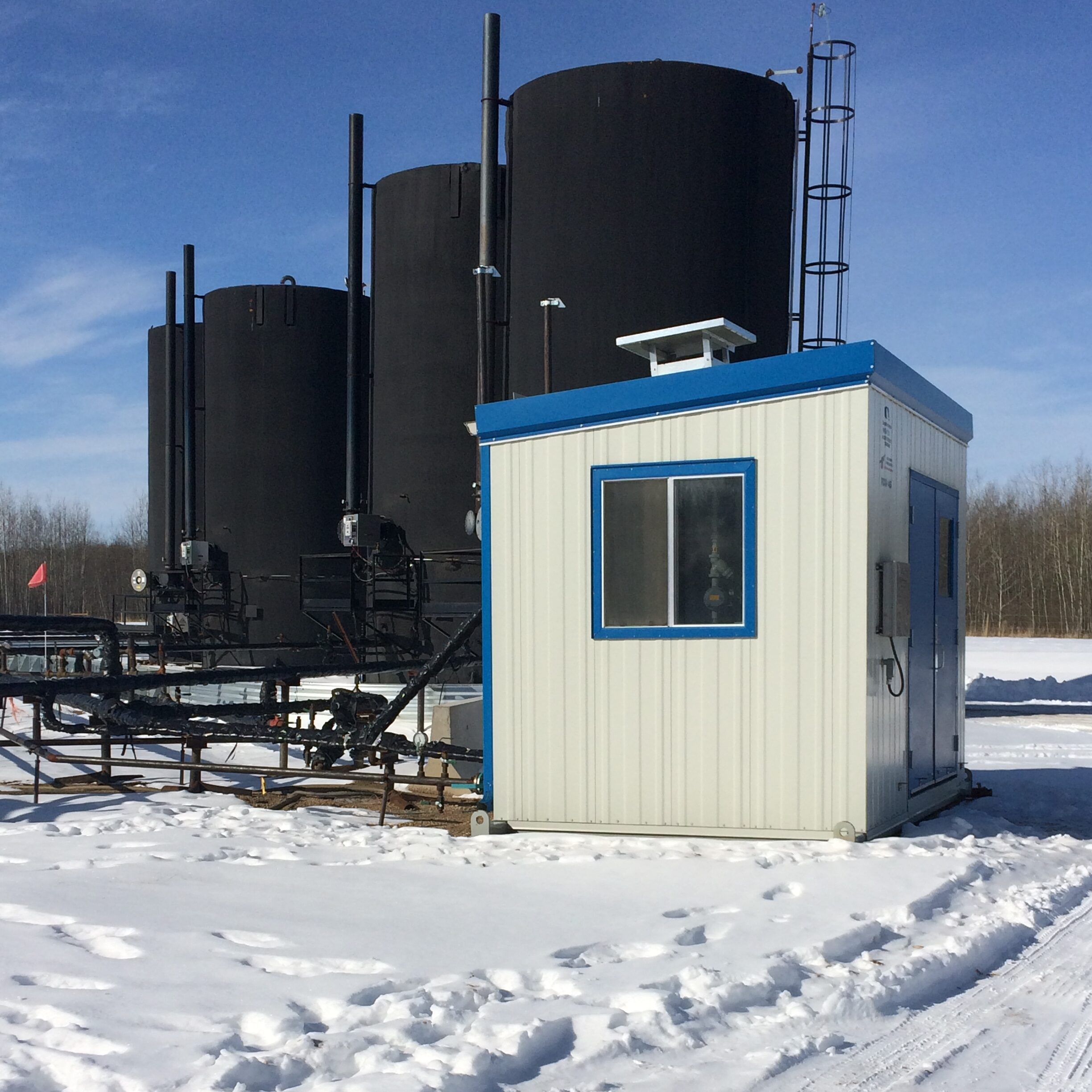GHG Emissions Reduction Program
GHG Emissions Management Strategy
Canadian Natural and the Canadian crude oil and natural gas sector are delivering game-changing environmental performance. Our culture of continuous improvement has delivered reductions in corporate greenhouse gas (GHG) emissions intensity along with reductions of absolute methane emissions of in North American Exploration and Production (NA E&P).

This progress is a testament to the hard work of our employees and contractors, and the commitment to continuous improvement, implementing innovative technologies, and challenging the status quo. Canadian Natural has a core technical team that identifies projects and initiatives that support our overall GHG emissions reduction strategy. Our strategy includes:
- integrating emissions reduction in project planning and operations;
- leveraging technology to create value, enhance performance and reduce emissions;
- investing in research and development (R&D), and supporting collaboration;
- focusing on continuous improvement to drive long-term emissions reductions through energy and process efficiencies;
- leading in carbon capture, utilization and storage (CCUS);
- engaging proactively in policy and regulation to effectively manage climate risks and opportunities; and
- developing new business opportunities and trends.
More information on how Canadian Natural is lowering GHGs and working with industry peers can be found below.
Pathways Alliance
Canada’s largest oil sands producers have established an alliance to achieve net zero GHG emissions by 2050.
Developing a pathway to net zero
In 2021, Canadian Natural, along with Canada’s other largest oil sands producers, established the Pathways Alliance.
The goal of this alliance, working collectively with the Federal and Alberta governments, is to achieve net zero GHG emissions from oil sands operations by 2050, to help Canada meet its climate goals, including its Paris Agreement commitments and 2050 net zero aspirations.
Members of the Pathways Alliance focus on seeking out, developing and implementing workable solutions to achieve GHG emissions reductions, while also ensuring the oil sands industry continues to provide sustainable long-term economic and social benefits for Canadians.
A phased approach
The path forward to reach net zero emissions from operations is supported by a three-phase approach. Because no single solution will get us to net zero, multiple parallel pathways are needed — from electrification, fuel substitution and energy efficiency to carbon capture, process improvements and the implementation of emerging technologies.
The first phase includes our foundational project, a major carbon capture, utilization and storage (CCUS) transportation line connecting oil sands facilities in the Fort McMurray, Christina Lake and Cold Lake regions of Alberta to a carbon storage hub near Cold Lake.
The transportation line would be expanded in phases to gather captured carbon dioxide (CO2) from more than 20 oil sands facilities and it would also be available to other industries interested in capturing their own emissions.
This plan will meaningfully reduce emissions from oil sands operations by 2030 (about 22MT) and achieve net zero emissions by 2050.

Natural Gas Production
A reliable, affordable and lower emission intensity energy source for power generation.
Natural gas production as a lower emission intensity energy source
As one of the largest producers of natural gas in Canada, Canadian Natural’s natural gas assets deliver strong environmental performance. Natural gas is a reliable and affordable energy source for power generation, with less than half the carbon footprint of coal.
Our Canadian Liquefied Natural Gas (LNG) projects are projects, for example, are projected to provide leading GHG performance and a preferred source of energy in a lower carbon emissions economy. These net global emission reductions are expected to receive recognition domestically and internationally as contributing towards Canada’s climate change commitments.
Our International operations supply natural gas to Côte d’Ivoire for electricity generation. Natural gas produced at the Espoir and Baobab Fields is exported via subsea pipeline through the Adjue Terminal onshore and distributed to the Abidjan Power Station, supporting the country’s electricity demand.
As the energy system integrates more renewable energy sources, natural gas will continue to provide an affordable and secure baseload energy supply. Read more about how Canada’s LNG exports could generate lower emissions compared to other facilities around the world.
Methane Emissions Reductions
We focus on operational practices and innovative technologies to reduce methane emissions.
Reducing venting
Through solution gas conservation and pneumatic controller retrofit projects in our Alberta primary heavy oil operations, we are achieving significant methane emission reductions. We have expanded our use of vapour combustor technology to convert methane to CO2 at our heavy oil operations when methane cannot be conserved, resulting in less carbon dioxide equivalent (CO2e) emissions.
In our conventional operations, we have completed over 8,000 pneumatic retrofits and removals since 2018, resulting in a cumulative CO2e reduction of approximately 815,000 tonnes/year.

Fugitive emissions – leak detection and repair
We continue to explore methods to enhance the accuracy of GHG emissions measurements from our conventional and oil sands assets. By improving our understanding of fugitive methane emission sources, we can increase efficiencies, reduce emissions and support best practices.
We collaborate with industry groups, the Petroleum Technology Alliance Canada (PTAC) and other partners, to develop more accurate systems and technologies for quantifying fugitive emissions, accelerating leak detection and repair, and reducing venting, while supporting the development of best practices.
Carbon Capture Utilization and Storage (CCUS)
We integrate state-of-the-art carbon reduction technologies in our projects, taking waste carbon dioxide (CO2) from our operations and using it as an input to improve performance and create value.
A portion of the CO2 for these projects at Horizon, Scotford and North West Redwater (NWR) Sturgeon Refinery, is captured from hydrogen manufacturing plants, producing “blue hydrogen” – hydrogen with reduced GHG emissions associated with the production process.

- CO2 addition to tailings – At Horizon, we continue to reduce GHG emissions intensity and invest in long-term technologies to recover CO2 from our hydrogen plant and add it to our tailings to enhance fine settling.
- Quest project – The Quest CCS facility is part of the Athabasca Oil Sands Project (AOSP), of which Canadian Natural owns a 70% interest. Quest has exceeded expectations with 7.7 million tonnes of CO2 permanently captured and safely stored from 2015 to 2022. Watch this video on how CCS works.
- Enhanced Oil Recovery (EOR) – We are a 50% partner in the North West Redwater (NWR) Sturgeon Refinery. NWR is part of a system built to safely transport and permanently store CO2 in Alberta, and the first refinery in the world to integrate CCUS from the outset. CO2 captured from the refinery serves as an anchor supply to the Alberta Carbon Trunk Line (ACTL) and used for enhanced oil recovery (EOR). The system is designed to transport up to 14.6 million tonnes of CO2 per year, equal to the impact of capturing the CO2 from approximately 3.2 million cars. At our Hays gas plant in Taber (southeast Alberta), we capture produced CO2 for use in our nearby Enchant EOR operations, which allows access to an additional two million barrels of crude oil that would otherwise have been left in the reservoir.
Watch the following video below, which discusses how we are are advancing carbon capture technology at Canadian Natural to reduce emissions.
Renewables
Oil and natural gas production provides a foundation to incorporate opportunities for lower carbon emission products, to support renewable energy, and to find new markets for our products.
Canadian Natural and industry continue to look for opportunities and solutions to find new markets for products that avoid downstream emissions. These investments will accelerate the clean tech sector across the country, reduce our scope 3 emissions and position Canada as producing the preferred ESG barrel.
Most bitumen produced from Alberta’s oil sands, like other types of petroleum, is primarily used for making combustion products like fuels such as gasoline, diesel and heating oil. We are currently exploring converting bitumen into valuable products that do not require combustion, like activated carbon, graphene and graphite. Products like these have the potential to be a game-changer with many different applications. For example, graphene is 200 times stronger than steel and the world’s most conductive material.
We’re looking for ways to:
- recover heavy minerals, rare earths and essentials for renewables, such as vanadium and nickel, which are needed for batteries and could be extracted from our bitumen streams;
- add solar and wind power generators to supplement the electrical needs of our existing and new facilities, and use biodiesel in our haul trucks (with biodiesel we generate ourselves); and
- incorporate other technologies that add to the benefits of traditional carbon capture technologies, such as direct air capture, which recovers CO2 from the air, and could potentially reduce end-use emissions.